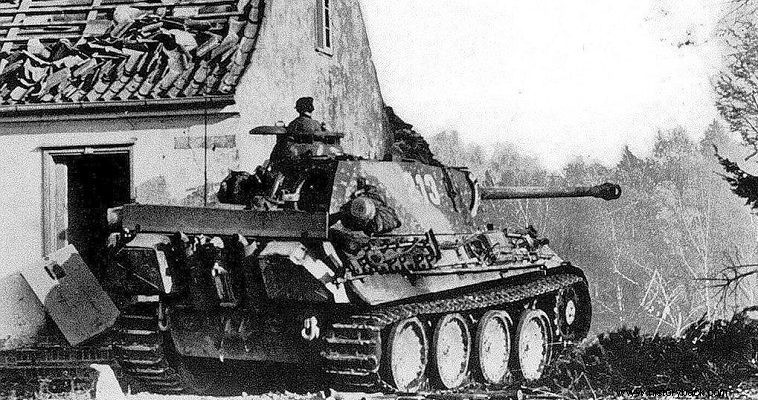
On 21 October the Soviet 2nd Brigade of the 25th Guards Tank Brigade of the 2nd Guards Tank Corps crossed the Angerap River and stormed the village of Nemerzdorf in East Prussia. Direct German counterattacks did not work and the Soviets occupied the village.
During an air raid Soviet soldiers took cover in a basement. There they found 14 German civilians hiding. According to the testimony of Gerda Meskulat, who survived badly wounded, a Soviet officer ordered his men to take the civilians out of the shelter and kill them. So it happened. A few hours later the Soviets retreated and the German soldiers who entered the village found the dead.
The Nazi regime tried to exploit the massacre for propaganda purposes , which turned out to be more extensive. The Germans set up a commission of inquiry with neutral, Spanish, Swedish and Swiss members. The commission came up with chilling facts. At first the number of dead was higher. A second conclusion was that all the dead women, aged 8 to 84, had previously been raped.
The Germans claimed that the Soviets also killed 50 French and Belgian POWs working in the village. As reported at the time, all civilians and prisoners had been killed with pickaxes and gun stocks.
In 1946 the chief of staff of the German 4th Army, Major General Eric Detlefsen, testified in an American court about it. “When in October 1944 Russian forces temporarily occupied Nemerzdorf, they tortured civilians. They were crucified on doors and shot. Many women were raped before being killed. Also the Russians killed about 50 French prisoners", he testified.
In 1953, Karl Potrek, a member of the Volkssturm (national guard) in 1944, testified:“On a farm there was a carriage. A naked woman had been crucified on it. At the Rother Krug inn also a naked woman had been crucified on a door. In the houses of the village we found 73 bodies, children and women and an old man. The skulls of some of the infants had been crushed." Another 95 dead were found in a neighboring village.
In 1991, after the collapse of the Soviet Union, part of the Soviet archives became accessible. German historian Bernhard Fisch, who dealt with the massacre by studying Soviet archives, wrote the book "Nemerzdorf 1944 – What Really Happened".
Fisch, citing the testimony of the commander of the 11th Guards Army, General Kusma Galitski, reports that 61 civilians were killed in the Nemerzdorf area. It also states that for another 10 dead there is no exact information on the causes of their death. British historian Sir Ian Kershaw also believes that the massacre took place, although the Soviets never admitted it. The German state archives (Bundesarchiv) contain, however, dozens of reports and photographs of the dead.
Of course the Nemerzdorf massacre is a drop in the ocean in relation to other massacres caused by the Soviets and especially in relation to the crimes committed by the Germans in the Soviet Union and throughout occupied Europe. But this does not mean that it is not a historical fact and as such it should not be hidden or falsified.
